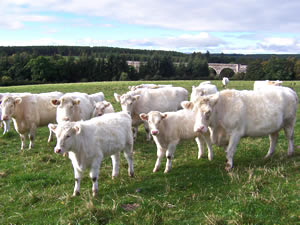 |
|||||||||
|
|||||||||||||||||||
|
|
Rare
Breeds Watchlist Update 2008 Two breeds of Sheep are to be classified as ‘Other Native Breeds’ and nineteen native breeds of poultry added to the annual ‘Watchlist’ compiled by RBST.
2007 gave us many challenges, floods, FMD, Bluetongue and Avian Influenza all these along other factors will have a direct effect on numbers of livestock, both now and in the future. However, the 2008 Watchlist shows that most breeds are showing an encouraging increase in numbers. “We are delighted that the numbers of Llanwenog and Ryeland sheep have increased and enabled both breeds to be moved to the ‘Other Native Breeds’ category. This is a great credit to the longstanding commitment of the Trust, breed societies and breeders.” says Dr Dawn Teverson, RBST Conservation Officer. Greater public awareness about food production and animal welfare together with a demand for traceable, quality products is supporting the work of RBST. Word is spreading throughout the farming fraternity that native breeds can be managed extensively without the need for the expensive inputs that are required by many other breeds. Premiums paid for quality meat and incentive schemes for keeping native breeds also help to increase animal numbers whilst discerning retail customers are returning time and again to butchers who provide this quality service. Other changes to the annual Watchlist include: Cattle The Irish Moiled Cattle Society, have put together a breeding programme on the basis of Geneped results and advice from the Trust. The breed moves from category 2 to category 3 now that we are assured that the programme is in place, and conservation breeding semen is now available to Irish Moiled breeders in addition to the bulls on the ‘for sale’ list. Other cattle breeds which are showing the results of concerted conservation efforts are the Shetland (category 3 to 4), original population Lincoln Red (category 2 to 3) and the Whitebred Shorthorn (category 1 to 2). Although an increase in numbers, we must remember that this still only brings the Whitebred Shorthorn to significantly less than 200 breeding females – more than ever a breed in need of serious support. Sheep Two primitive breeds, the Soay and the Castlemilk Moorit are going from strength to strength. The Soay (category 3 to 4), and the Castlemilk Moorit (category 2 to 3). The Castlemilk Moorit Breed Society has embarked on an extensive Breed Support programme, based on the results of breed analysis by RBST, using Geneped. Rare bloodlines are being targeted, both for semen collection and live animal conservation. The project is a model of cooperation between the Society, the breeders and the Trust. The Dorset Down is also classed as a success with its move (category 4 to 5). Horses and Ponies Equine breeds show little movement between categories for 2008. However, the Dales is a notable exception (category 1 to 2), a welcome increase after the shock of it moving from category 3, Vulnerable to 1, Critical in the 2006 Watchlist. This move is a reflection of the hard work of the owners and the breed society, but also illustrates the positive effect of accurate listing of a breed on the Watchlist, which means that we can monitor population numbers in order to concentrate effort and resources where they can be most effective. Poultry RBST met with the Poultry Club of Great Britain during 2007 and significant new projects are planned for 2008. These will build on the continuing work of the Trust and Roslin Institute to produce poultry DNA profiles, and the addition (after extensive research) of 19 native breeds of poultry to the Watchlist. This means that ‘other native breeds’ of poultry are included as well as those traditionally found on the Watchlist; as with other species. However, we do not have population data for these additional breeds for the 2008 Watchlist, so they will remain uncategorised. Pigs The Trust and British Pig Association (BPA) expect to make significant progress during 2008 with Geneped breed analyses planned for all our Watchlist breeds. However, these can only be attempted when BPA has received pig survey returns from the breeders and incorporated this information into the registration database. Both organisations will pool expertise and resources to take our breeds forward, post 2007. For more information contact RBST on 024 7669 8764 or visit www.rbst.org.uk
|
||||||||||||||||||

|
|
||||||||||||||||||
| home | agri-services | pedigree
pen | news | dairy | beef | machinery property | organisations | site map |
|||||||||||||||||||


